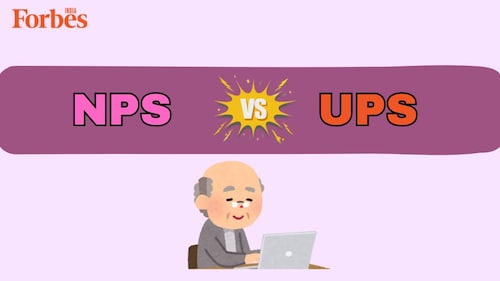NPS vs UPS: What you need to know about these pension schemes in India
Learn how to apply for the pension schemes in India, especially the NPS and UPS. Understand what they are and how to secure your financial future


Most of us spend years working hard, but when it comes to planning for life after retirement, we tend to overlook it - until it starts feeling a little too real. For good reasons, pension schemes in India are getting much more attention. With increasing life expectancy and rising costs, many people are rethinking their financial management strategies. The government has introduced several pension schemes in India that offer structured solutions to help citizens save for their future.
The National Pension Scheme or National Pension System (NPS) and the Unified Pension Scheme (UPS) are among the most common options. While both fall under the broader umbrella of government-backed pension schemes, they work differently and are often mixed up. Understanding the key differences between NPS and UPS could greatly affect how your retirement fund shapes up.
In this post, let’s discuss the eligibility requirements and the benefits for the applicant in more detail.
The National Pension Scheme is a retirement-focused investment plan launched by the government in 2004. It started as a scheme for new Central Government employees (except those in the armed forces), but by 2009, it was opened to every citizen on a voluntary basis. The Pension Fund Regulatory and Development Authority (PFRDA) regulates it under the PFRDA Act, 2013.
When you sign up, you"re given a Permanent Retirement Account Number (PRAN), which stays with you even if you change jobs or locations. NPS provides two types of accounts:
As of March 31, 2025, the total subscriber base for the National Pension Scheme in India reached nearly 20 million (~19.8 lakh crore), with applicants from central and State governments and even the corporate sectors.
The Unified Pension Scheme is the latest retirement initiative rolled out by the Central Government, effective April 1, 2025. It’s aimed at Central and State Government employees and is being introduced as an alternative to the existing NPS. The main goal? To bring more clarity, predictability, and long-term financial support for around 23 lakh government staff. UPS is an attempt to simplify the pension schemes in India and address the demands of the retired employees with a more secure income model.
The Central and State government employees covered under NPS are eligible for this scheme. They can choose to switch from NPS, but this decision is irreversible. Spouses of deceased NPS subscribers, who passed away before opting for the UPS, can also register. But you won"t be eligible for the scheme if you’ve resigned before completing ten years of government service before April 2025.
But why is UPS so important? It promises a fixed pension, a minimum monthly pension of ₹10,000, family pension, and relief allowances - all government-backed. While that’s reassuring, switching from NPS to UPS also means choosing between assured stability and flexible returns.
First Published: May 16, 2025, 16:30
Subscribe Now